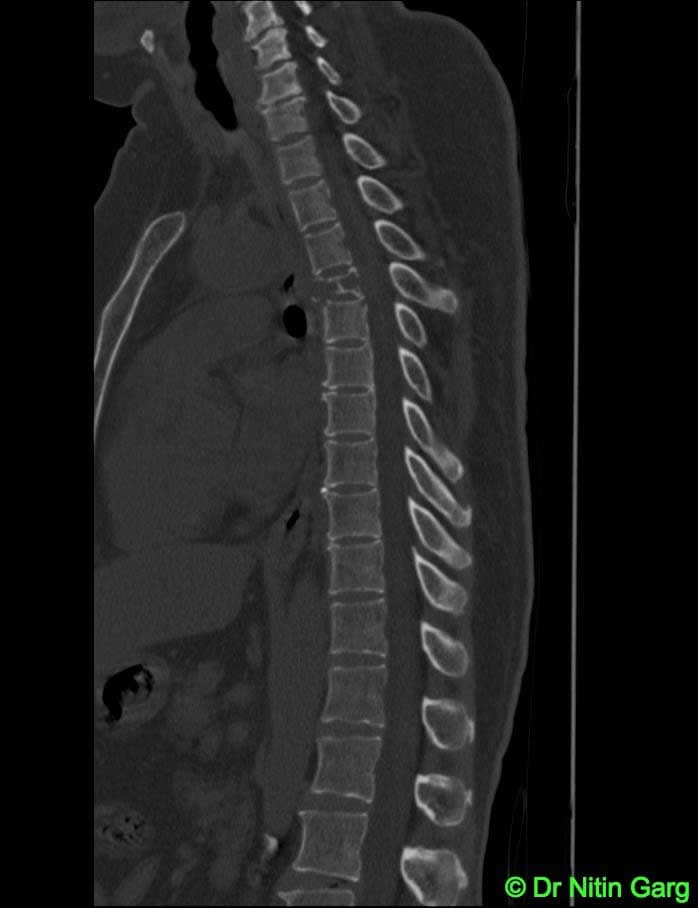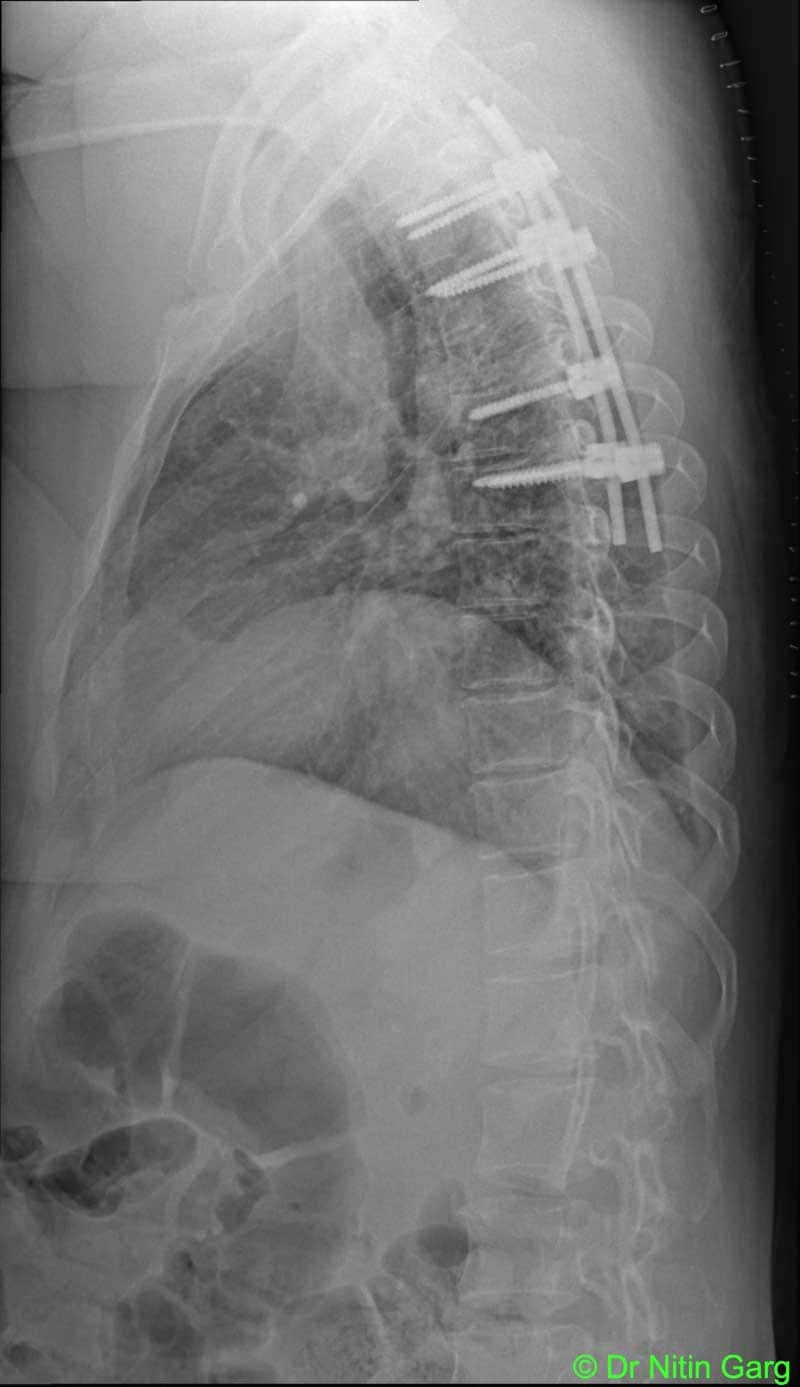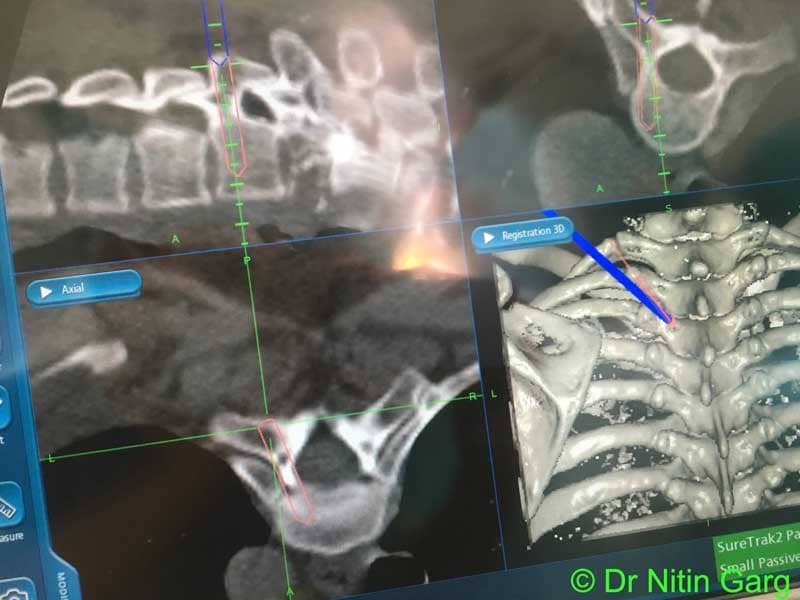Neuronavigation is a surgical aid which provides “Image Guidance” during neurosurgical procedure. It has now been established for various brain surgeries like endonasal approaches, skull base procedures, eloquent cortex lesions. Its utility is now increasing in spinal procedures also. Some regions in the spine as craniovertebral junction, cervical spine and upper dorsal spine have more complex anatomy, narrow pedicles. In these patients using navigation helps in marking the entry point, planning the trajectory and cannulating the pedicles with added safety.
A 60 year old lady presented with progressive weakness in both lower limbs and difficulty in walking of 2 weeks duration. MRI showed a bony lesion involving D4 vertebrae with cord compression. She underwent bilateral transpedicular decompression followed by D2-3 to D5-6 fixation using transpedicular screws. Navigation guidance was used for marking the entry points and directing the trajectory. C-arm guidance is limited due to overlapping of the shoulder. Patient tolerated the procedure well and made a good neurological recovery. Post-op CT scans showed appropriate position of the screws.

.jpg)
.jpg)



